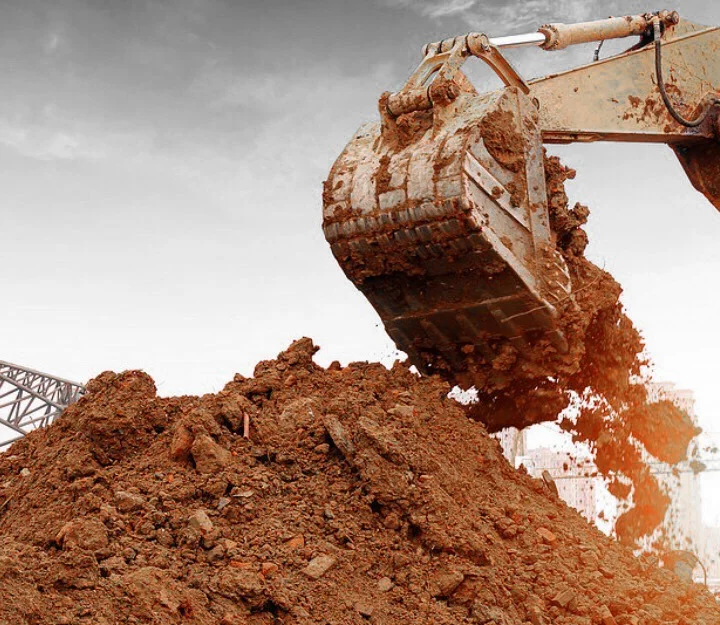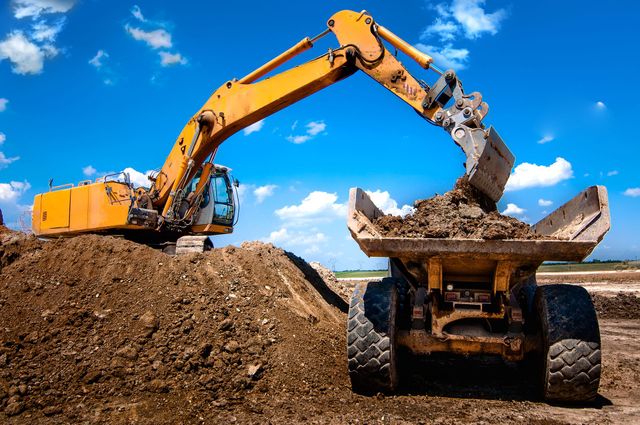Finest Dump Truck Companies in Ohio - Top-Rated Dump Truck Providers
Finest Dump Truck Companies in Ohio - Top-Rated Dump Truck Providers
Blog Article
Revealing the Art of Excavation: Pro Tips for Safe and Productive Digging
In the world of excavation, the proficiency of risk-free and efficient excavating is an art form that requires accuracy, adherence, and understanding to established techniques. As soil is transformed and earth is moved, the complexities of excavation reveal themselves, demanding a keen understanding of equipment, dirt composition, security procedures, and ecological factors to consider. The proficiency needed to navigate these components successfully can indicate the difference in between an effective excavation job and a possible catastrophe. By untangling the layers of this complex process, a globe of insights and methods waits for those seeking to raise their excavation skills to new heights.
Significance of Appropriate Equipment
To make sure the safety and security and efficiency of any excavation job, making use of the suitable tools is critical. Excavation tasks differ in extent and complexity, ranging from little residential landscape design tasks to massive building and construction tasks.
Excavators are essential pieces of machinery in any kind of excavating procedure. These functional devices can be found in different sizes to match different job requirements. Mini excavators are excellent for smaller jobs, while bigger excavators deal with more considerable projects successfully. Backhoes are one more crucial tools kind, combining the features of a loader and an excavator in one equipment. They are important for jobs requiring adaptability and maneuverability.
Bulldozers stand out in jobs that need pushing big amounts of soil or debris. By investing in the ideal devices, excavation projects can be finished safely, on time, and with precision.
Recognizing Soil Make-up
A thorough understanding of soil structure is essential for carrying out excavation jobs with precision and safety. Understanding the different types of soil is crucial as it straight affects excavation approaches, equipment selection, and overall task performance. Soil composition typically includes four major parts: sand, silt, clay, and organic issue. Each component has special residential or commercial properties that influence just how dirt reacts to excavation processes.
Silt bits are smaller sized than sand but larger than clay, using modest drain and communication. Organic issue, such as decaying plant material, impacts soil fertility and security.
Prior to starting excavation, performing soil tests to establish its composition and qualities is essential. This info assists in selecting the ideal tools, executing precaution, and developing excavation approaches tailored to the certain dirt problems - lancaster trenching. By recognizing soil structure, excavation professionals can improve task outcomes while guaranteeing safety and security and adherence to ideal practices
Precaution and Methods
Recognizing dirt structure is the cornerstone whereupon safety measures and methods for excavation projects are constructed, making sure the wellness of employees and the success of the undertaking. When it involves security during excavation, there are several vital actions that need to be carried out to minimize risks and prevent accidents.
First and leading, prior to top article any type of digging commences, a thorough assessment of the website ought to be carried out to determine any type of potential threats such as underground energies, unpredictable soil conditions, or nearby frameworks that can present a danger. It is essential to have a proficient person look after the excavation procedure to make sure that all safety protocols are followed purely.
Moreover, all employees entailed in the excavation must be properly educated in secure digging techniques and the proper operation of tools. By sticking to these security steps and protocols, excavation tasks can be finished efficiently and without event.
Reliable Excavation Planning
When starting an excavation job, precise preparation is crucial to guarantee performance, security, and effective end results. Effective excavation preparation involves numerous crucial steps that are essential for the smooth execution of the project. The initial step is to conduct a comprehensive website assessment to recognize any possible risks, such as below ground utilities or unsteady soil problems. This information is crucial for creating an in-depth excavation strategy that includes security measures and take the chance of reduction approaches.
When the site assessment is total, the next step is to develop a clear timeline and timetable for the excavation tasks. This includes figuring out the series of tasks, devices requirements, and workforce allotment. Appropriate organizing assists avoid delays and ensures that the job remains on track.

Additionally, interaction amongst all employee is extremely important throughout the preparation phase. Clear regulations, regular updates, and effective sychronisation are essential for an effective excavation job. By investing effort and time in careful preparation, excavation teams can significantly improve productivity, reduce threats, and achieve effective end results.

Taking Care Of Ecological Factors To Consider
With boosting emphasis on environmental sustainability in building and construction techniques, managing environmental factors to consider has actually come to be a crucial element of excavation projects. Excavation activities have the prospective to influence the surrounding atmosphere with dirt erosion, debris drainage, environment interruption, and contamination of water sources. To minimize these threats, it is necessary to implement ideal methods that focus on environmental management.

In addition, appropriate waste administration is essential to stop soil and water contamination. Carrying out procedures for the disposal of unsafe products, recycling of waste products, and decreasing making use of dangerous chemicals can substantially minimize the ecological effect of excavation find out here now tasks. By incorporating these methods into excavation preparation and implementation, building companies can make sure that their tasks are not only secure and productive however likewise environmentally accountable.
Conclusion
In final thought, understanding the art of excavation requires a thorough understanding of correct devices, soil make-up, safety and security measures, and reliable planning. By adhering to these standards and thinking about environmental factors, excavations can be carried out securely and effectively. It is important to prioritize security and efficiency in every excavating job to make certain effective outcomes.
As soil is turned and planet is relocated, the intricacies of excavation disclose themselves, demanding a keen understanding of tools, soil composition, safety and security protocols, and ecological considerations.To guarantee the security and performance of any excavation project, using the appropriate devices is paramount.An extensive understanding of soil make-up is basic for implementing excavation projects with accuracy and security. Comprehending the different types of dirt is important as it directly influences excavation techniques, devices option, and overall project effectiveness. By recognizing soil make-up, excavation experts can improve job results while making certain safety and security and adherence to ideal techniques.
Report this page